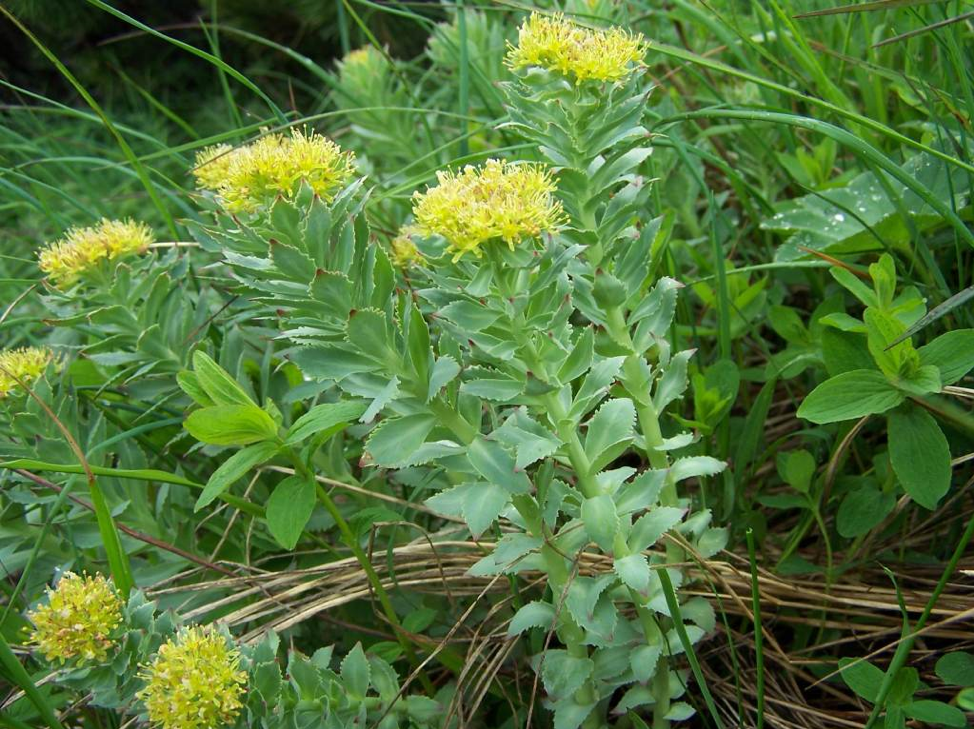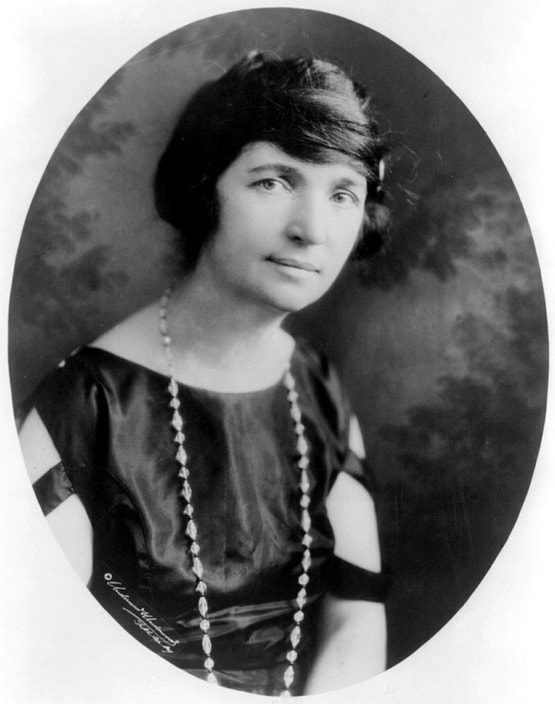|
What does it take for a fleshy green plant to thrive in the harsh upper northern regions of our world? Certainly a great deal of vital fortitude, and the ability to withstand and enjoy an extremely cold and unforgiving climate. Also called ‘Roseroot’ and ‘Arctic Root’, Rhodiola rosea is one of few plants that enjoys such conditions. It grows wild in Russia and the northern parts of Europe, Asia, and North America. Rhodiola and its slight variance of species (R. integrifolia, R. rosea, R. riza, etc, depending on location) have been used for centuries as a medicine and even a food. The root is typically taken as a tea or extracted via alcohol into a tincture. The above ground parts are eaten much like salad greens although the entire plant can be consumed. Historically speaking, its emergence from the ground in early spring was a welcome sight, and a sign that winter hunger would soon be abated. Its roots have an agreeable rose-scented aroma. Perhaps the most important feature of this humble little plant’s ‘claim to fame’ is its adaptogenic properties. What is an Adaptogen? The term ‘adaptogen’ was coincidentally coined by the Russians. They studied Rhodiola and other plants and substances that they considered to have the 'adaptogenic' trait all through the 20th century, trying to find botanical advantages for their soldiers (and even athletes) all through the Cold War era. Any natural physical substance that could give Russian solider a leg up on everyone else was accepted and widely studied. Adaptogenic herbs are defined as herbs that: -boost energy and sense of well being in a direct way -have a stabilizing and soothing effect on the adrenal glands -act as an overall “systems tonic” to one or more organs -reduce fatigue -enhance endurance -reduce recovery time after exercise and surgery -reduce stress response physically, mentally, and emotionally -deepen quality of sleep and rest -stabilize body systems: neural, endocrine, immune, reproductive, etc. -are generally classified as untoxic (and therefore incredibly safe in a multitude of varying doses) Rhodiola is indeed a very powerful adaptogen, and it has also been utilized as: a nervous system stimulant, an antidepressant, a fatigue reducer, as well as a remedy for high-altitude sickness—all healing qualities a person might especially require in any dreary high altitude or high latitude area. Historical Use and Trade Rhodiola has been used for millennia by the peoples living in the colder altitudes of the north to help combat the physical (and even mental) effects of the cold. The first written reference of its use appeared in 77AD in Dioscorides’ De Materia Medica although it had been used medicinally and as a food source for millennia prior. It has been used extensively in Norway for centuries. The Norse considered it to be astringent and used it to treat wounds, swollen extremities, and lung problems. The Vikings consumed rhodiola to give them maximum strength and endurance for heavy labor, and also before going into battle. According to J. J. Schofield in Discovering Wild Plants, the North American Indians in the Alaska and the northwest region of the U.S. and Canada fermented the plant before eating it. In ancient China, where the ruling elite were obsessed with longevity and life extension, many emperors sent trade expeditions to Siberia in exchange for this valuable root. They considered it a “gift of the spirits.” Its name in Traditional Chinese Medicine is hóng jǐng tiān. In Russia, rhodiola was used as a hair wash and a vulnerary (wound healing agent). The Komi people of the Ural mountains stored their rhodiola roots in specially crafted birch bark boxes. They used the root to treat weariness and nervous diseases, and it was also considered to be an overall general use tonic for a wide range of maladies. Hunters in the Russian region were especially fond of the root. Hunting the frigid boreal forests of the far north could come at a high price to one’s vigor and stamina, but rhodiola root was used with great success to combat the physical stress of hunting for months on end in the cold. Even today, many traditional peoples of the northern Eurasian region still use rhodiola extensively. In Siberia, it is considered to be an aphrodisiac and is used to prolong life. It is traditionally given as a gift to newly weds to symbolically wish the couple a long and fruitful life together. It is rumored that Siberians keep their personal Rhodiola crops a secret, so as to avoid theft and also generate the ability to sell part of their harvest for profit. Modern Research Most of the modern research conducted on Rhodiola rosea has been done in Russia, Denmark, Scandinavia, Bulgaria, France, Germany, and Sweden. Due to language barriers, much of the research surrounding this plant still remains tucked away in research papers written in languages other than English. Perhaps for this reason, rhodiola did not become well known in America until the 1960s. Today, it is incredibly popular and has begun to be cultivated due to excessively high demand. Russia listed rhodiola on their Red List in 1980, a sort of equivalent of the American endangered species list. Although modern research is not in unison (as it rarely ever is), rhodiola is typically classified as an adaptogen and is generally thought to be helpful for altitude sickness, recovery of physical exertion, fatigue, various neurological conditions, increased mental efficiency, regulating stress response, boosting mood, increasing one’s resilience to the cold, anxiety, cognitive disfunction and decline, physical fitness, memory enhancement, weight reduction, immune system stimulation, stomach aches, sexual dysfunctions, cardiac problems, and mood support, with the list of claimed and discovered uses growing longer each year. Sources:
http://cms.herbalgram.org/herbalgram/issue56/article2333.html?ts=1544546444&signature=6101386359bb27579a7f851226c1a666 Rhodiola rosea 1st Edition Edited By Alain Cuerrier, Kwesi Ampong-Nyarko CRC Press https://pfaf.org/user/Plant.aspx?LatinName=Rhodiola+rosea Schofield. J. J. Discovering Wild Plants - Alaska, W. Canada and the Northwest. https://www.drugs.com/npp/rhodiola-rosea.html#fandc-np5406.b1 Further Reading: https://www.ema.europa.eu/documents/herbal-report/final-assessment-report-rhodiola-rosea_en.pdf http://www.ethnoherbalist.com/best-rhodiola-rosea-review/
0 Comments
In the post script of our book "Ages of the Giants: A Cultural History of the Tall Ones in Prehistoric America", we exposed some lesser known facts about Margaret Sanger, the infamous founder of Planned Parenthood. The following is an excerpt from the book: "Margaret Sanger is mostly known for founding Planned Parenthood in 1942 (which emerged from out of her American Birth Control League, established in 1921) and promoting the concept of “birth control” in the United States. Sanger was actually a highly effective voice of eugenics and an official member of the American Eugenics Society (under the name Mrs. Noah Slee). In her many speeches, Sanger repeatedly referenced eugenicists such as Charles Davenport, Francis Galton, and Madison Grant. She advocated the technocratic, highly managed society originally envisioned by Georges Vacher De Lapouge that was fervently promoted in America by Madison Grant. Sanger’s philosophy was that birth control and eugenics had the same end: to eliminate the unfit and undesirable among humanity, which she referred to as “weeds”. (10) Sanger had received her education in eugenics from Havelock Ellis, who according to some was also her lover and the individual who heightened her interest in the occult. An ardent practitioner of Theosophy, on January 8th, 1936, Margaret Sanger gave a speech about the value of birth control at the headquarters of the Theosophical Society at Adyar, India. In her speech, she advocated the sterilization of the “feebleminded”, epileptics, and those with inheritable diseases, and announced, “I believe this whole movement belongs to those who are helping the spiritual evolution of the race.” (23)
|
About UsWe are explorers of cosmology, anthropology, philosophy, medicine, and religion. Archives
October 2020
Categories
All
|
Photo used under Creative Commons from John Brighenti




 RSS Feed
RSS Feed
